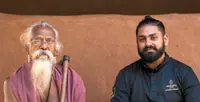From talk to action: There must be dialogue between the scientific community, political leaders and decision makers. – 123rf.com
IN the final quarter of 2022, two major United Nations (UN) meetings were held back to back – the UN Climate Change Conference (COP27) in Sharm el-Sheikh, Egypt, in November, and the UN Biodiversity Conference (COP15) in Montreal, Canada, in December.
COP27 was crucial for two reasons. The Ukraine war and Covid-19 forced numerous countries to resume coal-fired generations, pushing carbon emissions to record highs. The geopolitical crisis likewise exposed our susceptibility to energy shortages and the need for cultivating alternative energy sources.





